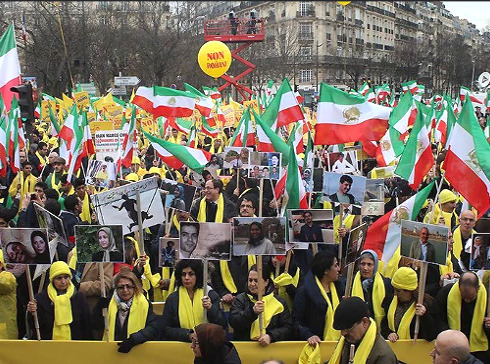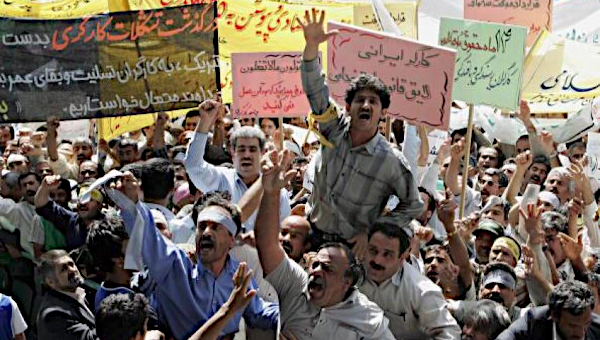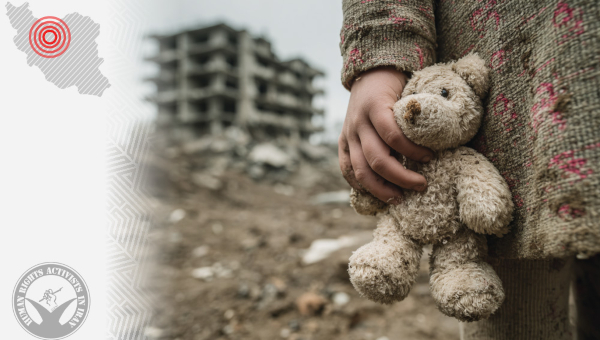Iran’s parliamentary elections for the Islamic Consultative Assembly were held in parallel with the elections for the Assembly of Experts1 on 26 February. Iran is one of the main actors of the ongoing wars and conflicts in the Middle East and has just recently overcome its long-standing nuclear crisis with the Western powers. Naturally, with these elections the internal dynamics of the Islamic regime was again at the centre of attention. The elections were discussed and analyzed based on two lists of alliances; a list formed by hardliners or ultra-conservatives and another formed by the reformist-backed pro-Rouhani moderate conservatives which are generally labeled ‘the reformists’ by the international media in the context of these elections (this latter group also includes some unknown reformists).

independent MPs. Actually, it should be noted that ‘the reformists’ swept all 30 parliamentary seats in the capital city of Tehran. The final results in some regions, where a sufficient proportion of the popular vote has not been reached by the candidates, will be decided in the second round. However, it seems that the results from the second round also will not change the general distribution of the seats inside the parliament and independent MPs will determine which group is dominant.
It is worth emphasizing that the border between moderate and ultra conservatives is not very pronounced. Usually, the nature of the problems or events discussed in the parliament, the pressure from other organs of the state, and some similar factors we are familiar with given Iran’s political order, can change the ideological spectrum of the parliament drastically. The story of the elections for the Assembly of Experts is not different from the parliamentary elections. The reformists-backed ‘moderate conservatives’ won fifteen out of sixteen seats in the capital Tehran, but generally lost the elections to hardliners in other regions.
The statistical distribution of the parliament’s seats, with no major winner at first sight, can be interpreted regarding the process of the elections, the reformists’ attempts to receive a share of the power, and Rouhani’s need for the parliament’s support after securing the nuclear deal with the Western powers. Considering the age of the present supreme leader, Khamenei, the elections for the Assembly of Experts also reveals its importance, since this is the body that will elect Khamenei’s successor. Therefore, before declaring the winner of the elections, we need to look at the nature and the process of the elections.
A Fair Trade:
The right to be elected to partisans, the people should make do with the suffrage
The right to elect and to be elected was a main gain of the 1979 revolution for the people who toppled the Shah’s dictatorship. Unfortunately, like the other gains of the revolution, this right was also seized by the Khomeini-led Islamists. When the revolution was lost entirely to reactionaries, the partisans of the regime claimed the monopoly over the right to be elected. All the political organizations and parties, the trade unions, NGOs and other similar entities providing for the participation of the people in politics were denounced as illegal or were shut down. The roles were thus distributed: the right to be elected was given to the regimes’ partisans and the right to elect was given to the people with no qualms.
However, after a while, the elections turned into a conflict between the different wings of the regime. Then the elections became important solely because of the competition and the balance of power between the two wings and their post-election political, social, and economic consequences. Sometimes one of the wings, mostly the conservatives, when in power wrested the right to be elected from the other wing. The arbitrary approval of candidates by the Guardian Council of the Constitution2 (usually called the Guardian Council for short) turned the elections into a big legitimacy show. In the early years of the religious dictatorship, the people who refused to participate in the show were threatened with losing their job, education and similar rights, even though these threats were not going to be materialized after the election. Sometimes a hope of intra-regime change made the polls appealing. In other words, the dictatorship gained its legitimacy by threats and fraud, while the people were celebrated for their magnificent and powerful participation. In the light of this knowledge about the nature and process of elections in Iran, voting in the elections or boycotting it became a usual debate among dissident circles for more than 35 years.
The Guardian Council in these elections displayed a historic performance in disqualifying candidates, almost erasing the reformists from the elections. The arbitrariness of the approval process seems to have bothered the spokesman of the council, as he resigned from his post of spokesman exactly on the day when the results of approval process were supposed to be announced. A small number of reformists not vetoed by the Guardian Council are those who condemned the 2009 popular revolt in the aftermath of the presidential elections that brought Mahmoud Ahmadinejad to office for the second time. The reformist opposition, claiming to be the only representative of religious democracy as the best format of the democracy, rarely objected the disqualifications firmly. They acted as nothing had happened and went on following and supporting the moderate conservative president Rouhani, and a former president, Hashemi Rafsanjani, about whom they proudly spared no curse terms in the past. The reformists’ goal for these elections was solely to prevent three well known hard-core ultra-conservatives from entering the Assembly of Experts.
The Reformist Conservatives or the Conservative Reformists
With these elections a new concept should be added to the political encyclopedia in Iran; the conservative reformists. In the early years of the post-revolutionary era, reformists stormed the U.S. Embassy in Tehran. Then, during the Iran-Iraq war they ruled the country with statist economic policies while at the same time playing an active role in slaughtering the opponents of the regime. They started producing certain theses on political development throughout Rafsanjani’s terms in office, when they were deprived from a share in the power structure.
Reformists came to power in 1997 under Khatami’s leadership promoting the idea that changes and reforms within the regime’s structure would carry Iran to the ideal society (Madine-ye Fazele). During this term, the only meaningful job that they accomplished was to ease, in a very subtle form, the growing unrest and protests of
the people suffering from Rafsanjani’s severe neoliberal policies. The reformist movement during the eight years of the Khatami presidency consistently invited people to toleration by loudly declaring that political development eventually will bring the economic development. At the end of this period, in 2005, they handed power to the rising populist Ahmadinejad from the younger wing of the ultra-conservatives. During the 2009 uprising, when the religious dictatorship was seriously shaken for the first time since the 1979 revolution, the reformist movement was scared by the unexpectedly massive protests, accepted every method of repression implemented by the conservatives for the sake of securing the regime.
After being completely erased from the elections, the reformists came up with the ‘great idea’ of presenting some well known ultra and moderate conservatives as reformists to the middle class in Tehran and some other big cities. Their expectations from these elections were to close the rift with Khamenei, regain the regime’s trust, and move slowly toward power. In other words, in the new phase of reformism in Iran, a good reformist is the one who does not act as a lèse-majesté for the dictatorship.
The Assembly of Experts: the Future of the Islamic Republic
Considering the age of Khamenei and his health condition which is a matter of rumors from time to time, it seems that the next Assembly of Experts will have a chance to fulfill its responsibility of electing the next supreme leader. Naturally, this probability excites the reformists, who incurred the wrath of the present supreme leader. The reformists with no major candidate for this assembly decided to prevent some prominent members of this assembly, who are older than Khamenei, from being re-elected, and they did prevent two of them. However, looking at the ‘List of Hope’ supported by the reformists there is no sign of hope for them. One of the figures in the List of Hope is the judge responsible for a large number of verdicts issued in the 1980s to execute opposition members, including some socialists. Another one is a former minister of intelligence and known as one of the main authorities responsible for a chain of assassinations of intellectual and political figures in the 1990s. These ‘moderate’ butchers are only two well known examples of a long list of slaughterers joining the Assembly of Experts. Since the reformists themselves are involved in most of the slaughters and butchering, no one expects them to act differently. However, it clearly shows the quality and limitations of the permanently promoted change and reform within the regime.
On the other hand, it seems that there is no consensus on a common candidate for the next supreme leadership. The conservatives’ majority in the next eight-year period of the assembly reveals no chance of choosing a reformist or even a moderate supreme leader. However, it is widely believed that post-Khamenei Iran would have a leading council rather than an individual supreme leader. With these subtle calculations, the reformists are targeting power by supporting their opponents.
The Dictatorship Has Won the Elections
The propaganda machine of the regime worked perfectly before the elections. Considering the present situation of the Middle East, Iran, the state permanently targeted by Israel and the U.S., is now the most stable country in the region. Having solved its nuclear crisis with the West, the regime is now talking of a very promising future. On the other hand, the bourgeoisie, the middle class and, the political activists in exile who support Rouhani and have a strong faith in reformists, threatened as they feel by the ISIS and Syrianization of Iran, have promoted the ill-famed murderers of the past as the reformists of today. Naturally, sending the ultra and moderate conservatives to both assemblies (as if there were other choices) has satisfied them completely. The regime also is delighted by satisfying them with a minimum concession.
The Western powers are also satisfied by the results of the parliamentary elections. The support to Rouhani, even a moderate one, is a support to the nuclear agreement. At least, the government will have to deal with a smaller number of problems in applying the terms of the agreement. Moreover, international capital will have a chance of a more level field in competing with the companies of the Revolutionary Guards, which have an eye on every big economic project in Iran. From the political point of view, the support for the moderate government, which is open to negotiations (in complete contrast to the Ahmadinejad period), is music to the ears of the West. This is all the truer especially when we take into the account how depressed the West finds itself now in the Middle East.
Let us then see who lost the elections: the people did. The rate of unemployment is very high. Hawking in the streets is the source of income for tens of thousands of people. Based on official statistics, there are more than 25 thousand homeless people only in one of the regions in the capital Tehran. Selling babies is a normal thing among the poor. Will the elections change the situation? No, it won’t. Because the regime only cares about the bourgeoisie and the middle class, which now have an organic relationship with government. On the other hand, the regime is preparing its forces for a probable uprising of the proletariat. Recently, security forces have conducted exercises against feigned protests, so as to develop their defense of the bourgeoisie. The lack of organizations that can lead the working class obviously makes it easy for the dictatorship to suppress protest that remains local. What poor people get is a piece of carton to sleep on or being hunted under the guise of the war on drug dealing. Faced with such a situation in Iran, the opposition in exile, the opponents of the regime and the social democrats within Iran itself invest their ‘hope’ in the enemies of the people disguised as reformists and line up with the dictatorship and the bourgeoisie. The Iranian left should find a way to overcome the profound depression created by the loss of the revolution. Otherwise, by relying on a reform movement sliding more and more to the right, the left will have nothing but only some old heroic stories to tell the people. •





